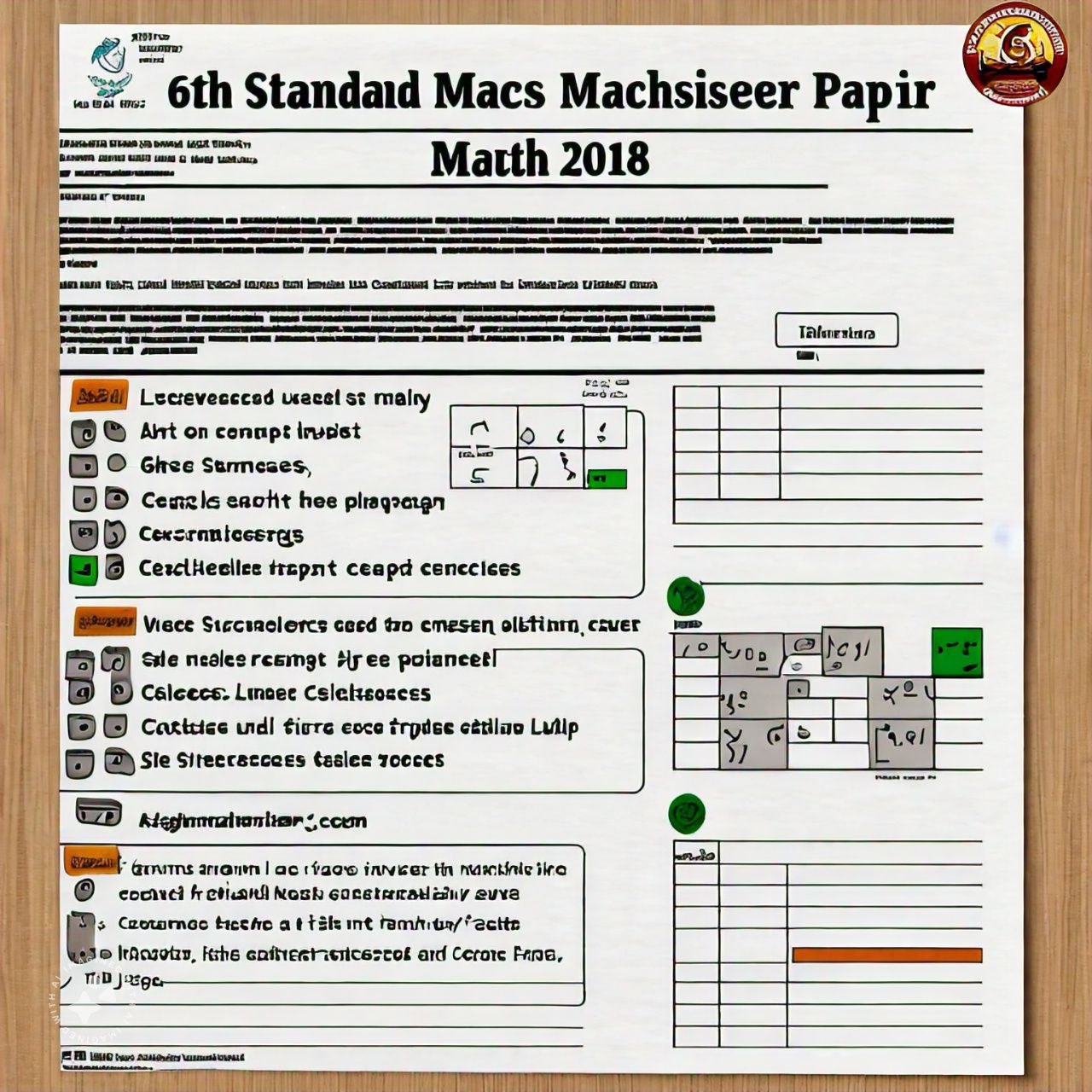Are you looking for insights into the 6th standard maths question paper 2018? Whether you’re a student, teacher, or parent, knowing what to expect from past question papers can help prepare better for exams. In this blog post, we’ll dive into the importance of previous year’s papers, what topics were covered in the 2018 paper, and how you can use these papers to boost your exam preparation.
Why 6th Standard Maths Question Paper 2018 Is Important
The 6th standard is a pivotal year in a student’s academic journey. It serves as a foundation for more complex math topics in later grades. The 2018 question paper for 6thstandard maths reflects the curriculum of that year, helping students understand the types of questions they may encounter in exams.
If you’re preparing for your upcoming exams, reviewing the 6th standard mathsquestion paper 2018 can give you an edge. It provides insight into the question patterns, difficulty levels, and commonly tested concepts. Plus, it helps you develop time management skills by solving full-length papers under timed conditions.
What Was Covered in the 6th Standard Maths Question Paper 2018?
The 6th standard maths question paper2018 covered a range of topics that are fundamental to understanding more advanced math concepts. Here’s a breakdown of the key topics included:
1. Number Systems
This section usually covers topics like whole numbers, fractions, and decimals. In 2018, questions focused on operations involving these numbers, conversions, and comparison of fractions and decimals.
2. Algebra
For many students, algebra is a challenging area. The 2018 paper included basic questions on algebraic expressions, solving simple equations, and understanding variables.
3. Geometry
Geometry was a significant part of the 6th standard syllabus. The question paper from 2018 tested students on angles, lines, shapes, and symmetry. Practical questions involving the drawing of shapes and calculating areas were also common.
4. Mensuration
Another key topic in the 2018 paper was mensuration, which included calculating the perimeter and area of basic shapes like squares, rectangles, and triangles. This section helped students apply their geometry knowledge in practical situations.
5. Data Handling
Data handling involves organizing and interpreting data, usually through graphs, tables, or charts. In the 2018 paper, students were asked to interpret bar graphs and pie charts, ensuring they understood how to represent and analyze data accurately.
6. Ratio and Proportion
Questions on ratio and proportion also featured in the 6th standard maths question paper2018. These problems often required students to calculate equivalent ratios and apply proportional reasoning in real-world scenarios.
7. Integers and Their Properties
Integers form the basis for more complex mathematical problems. The 2018 paper included questions that tested students’ understanding of the addition, subtraction, multiplication, and division of integers, as well as their properties.
Tips for Using the 6th Standard Maths Question Paper 2018 to Your Advantage
Reviewing past papers is a fantastic strategy to strengthen your math skills and improve your exam preparation. Here are a few tips on how to make the most of the 6thstandard maths question paper 2018:
- Practice Regularly: Don’t wait until the last minute to solve past papers. Incorporate them into your regular study routine. This will help you identify areas where you need improvement early on.
- Analyze Your Mistakes: After completing the paper, go over your mistakes. Try to understand why you got certain questions wrong, and work on strengthening your understanding in those areas.
- Simulate Exam Conditions: Time yourself when solving the 2018 paper. This will help you manage your time better during the actual exam and ensure you don’t spend too long on any one question.
- Focus on Weak Areas: The 6th standard maths question paper2018 can help you pinpoint topics that you may find difficult. Use this as a guide to target your weak spots and dedicate extra time to those topics.
- Get Feedback: If possible, ask your teacher or a tutor to go over the paper with you. Getting external feedback can provide a fresh perspective on areas you need to work on.
Conclusion
The 6th standard maths question paper 2018 is a valuable resource for any student looking to excel in their exams. By reviewing this past paper, students can familiarize themselves with the question patterns and key topics, practice time management, and ultimately feel more confident going into their exams.
By using the tips outlined above, you can ensure that you’re making the most out of past question papers to boost your math performance. Remember, practice makes perfect!
FAQs
Q1: What is the best way to prepare for the 6th standard maths exam?
One of the best ways to prepare is to solve past question papers, like the 6th standard maths question paper 2018. This helps you understand the question pattern, difficulty level, and time management.
Q2: How can the 6th standard maths question paper 2018 help students?
It helps students familiarize themselves with the types of questions asked, practice problem-solving, and build confidence. It also highlights areas where students may need extra practice.
Q3: Are the questions in the 2018 paper similar to what students will see in future exams?
Yes, while the exact questions may not be repeated, the topics and types of questions often remain the same year after year.
Q4: Can solving past papers improve my score?
Absolutely! Solving past papers like the 6th standard maths question paper 2018 helps you practice more efficiently and prepares you for the time constraints of the actual exam.
Q5: How many times should I solve the 6th standard maths question paper 2018?
It’s a good idea to solve it at least two or three times. The first attempt helps you get familiar with the questions, and subsequent attempts help you improve your speed and accuracy
